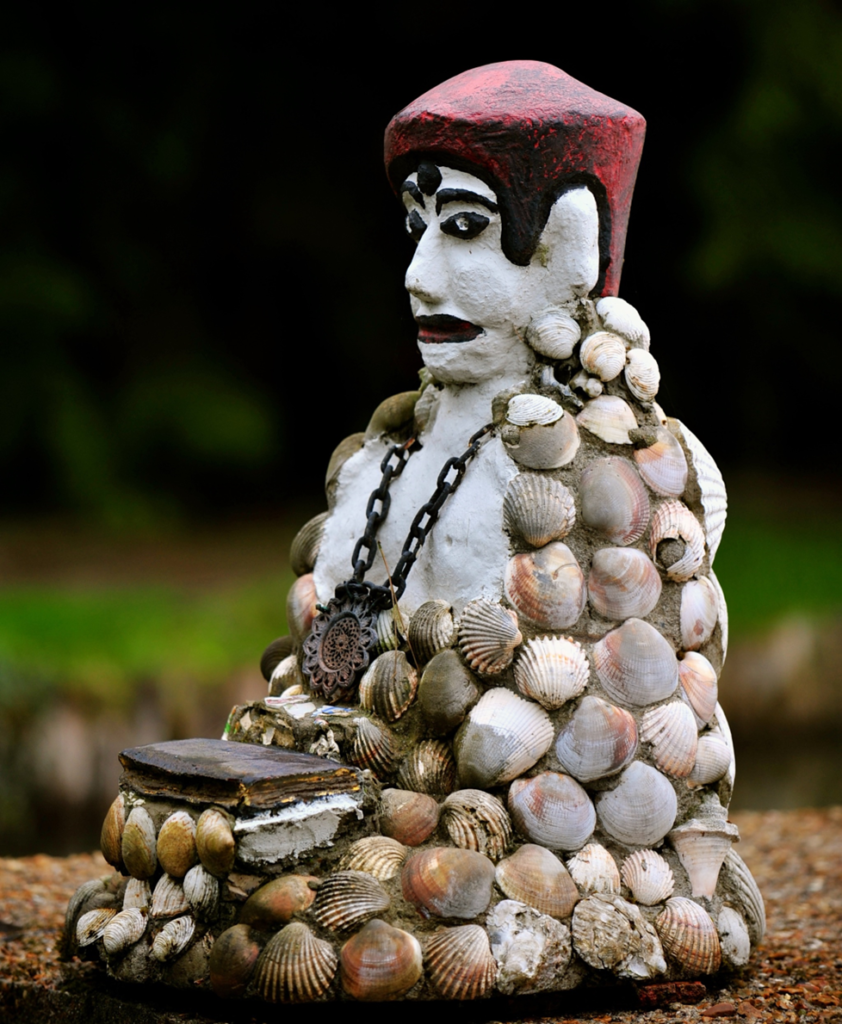FR
Jean-Pierre Schetz est né en 1921 à Reppel dans la province de Limbourg en Belgique. Après avoir travaillé comme ferrailleur, puis maçon, il est employé au service de la voirie à Liège où il habite depuis la fin des années 1920.
Dans les années 1960, Jean-Pierre Schetz emménage dans une maison flambant neuve de la cité sociale de Jupille située sur les hauteurs de Liège. L’austérité et l’uniformité des pavillons l’incitent à transformer son petit jardin en un site inventif qu’il baptise « Un coin de soleil ». Dès le début des années 1970 et jusqu’à son décès en 1986, Jean-Pierre Schetz travaillera à l’embellissement de son univers quotidien. En dehors de son temps de travail, puis à l’âge de la retraite, il ne cessera de mettre en œuvre des sculptures à l’iconographie variée (architectures, personnages réels et fictifs, animaux…) en exploitant la richesse des couleurs des tessons de mosaïques, de vaisselles cassées et de divers objets de rebut.
A la mort du créateur, son épouse veilla à l’entretien du jardin jusqu’à sa propre mort en 2006. A cette date la société gestionnaire de la cité sociale décida la destruction d’Un Coin au Soleil. Grâce au Mad Musée de Liège, une infime partie fut sauvegardée et a rejoint depuis 2008 la collection de La Fabuloserie.
EN
Jean-Pierre Schetz was born in 1921 in Reppel in the province of Limburg in Belgium. After having worked as a scrap metal worker, then as a mason, he was employed by the road service in Liege where he lived since the end of the 1920s.
In the 1960s, Jean-Pierre Schetz moved into a brand new house in the social housing estate of Jupille, located in the heights of Liege. The austerity and the uniformity of the pavilions incite him to transform his small garden into an inventive site that he names « Un coin de soleil ». From the beginning of the 1970s until his death in 1986, Jean-Pierre Schetz worked on the embellishment of his daily universe. Outside his working time, then at the age of the retirement, he will not cease to implement sculptures with the varied iconography (architectures, real and fictitious characters, animals…) by exploiting the richness of the colors of the shards of mosaics, broken dishes and various objects of waste.
After the death of the creator, his wife took care of the maintenance of the garden until her own death in 2006. At that time the company managing the social housing estate decided to destroy Un Coin au Soleil. Thanks to the Mad Musée de Liège, a small part of it was saved and joined the collection of La Fabuloserie since 2008.

